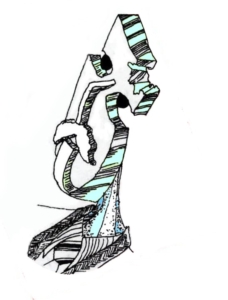Sound: [b]
Signifying:
- (formally) cylindrical, not sharp, rounding
- (as action) [of] commencing-innitiative nature
- (functionally) [functional usage is rare] easy, fitting
Place of articulation: two lips (bi-labial)
manner of articulation: stop/plosive
voiced/voiceless: voiced
The significance of the sound [b]
This sound could be considered as one of the first four prominent stop sounds as found in the first phonetic alphabet of Ugarit (around 1400 BCE [3400 years ago]). Theoretically it conveys some complex but prominent concept. The order with Ugarit alphabet continued with Greek alphabet and Arabic alphabet. On Ugarit alphabet the letter standing for the sound [b] is called bet meaning ‘home’.
Our studies show that the early sounds were of semiotic value. Therefore, we use signify semiotically (instead of sign) for the sounds. The semiotic value of the stop sound [b] is:
[formally] cylindrical, not sharp, rounding,
(as action) [of] commencing-innitiative nature,
(functionally) [functional usage is rare] easy, fitting
Graphic figure as a sign (icon)
The graphic shape of the letter standing for the sound [b] in Greek alphabet, shows the same presumed signification with the sound ‘a body member which is cylindrical on main body’:
We simply consider this graphic shape as an icon (primary level of signs) semiotically:![]()
This graphic icon comprises a vertical main body corpus:![]()
And two rounding/cylindrical curves sticking on the vertical main body:![]()
Shape of B in its sign-signify value
This graphic shape as a signifier signifies the concept of ‘a body member which is cylindrically sticking on main body’.
Examples:
Body organs sprouting out of main body:![]()
- Baldır (calf, behind the lower leg), 2. Bud (thigh), 3. Badaq (buttock), 4. Bel (waist), 5. Böyür (body side)
- Bağır (chaste, lung), 7. Bilək (wrist), 8. Barmaq (finger), 9. Buxum (first part of finger), 10. Boyun (neck)
- Boğaz (inner part of neck), 12. Baş (head), 13. Beyin (brain), 14. Burun/Bırın (nose), 15. Bəniz (cheek)
- Buxaq (double), 17. Böyrək (kidney), 18. Bağırsaq (intestine)
